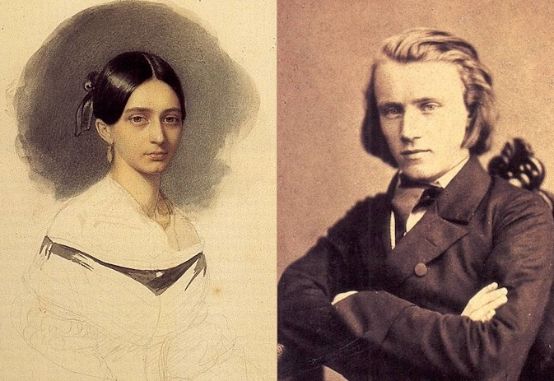A friendship and its environment
Meinhard Saremba shows how the division in 19th century musical life into a Liszt-Wagner party and a Schumann-Brahms party is reflected in the lives of Clara Schumann and Johannes Brahms.

The friendship between the bearish Johannes Brahms and the urbane Clara Schumann has already been extensively discussed and illuminated down to the most intimate details. In my opinion, however, this relationship has never been considered in terms of the development of musical life in the second half of the 19th century. It was to be expected that the division into a Liszt-Wagner and a Schumann-Brahms party would play a part in this. But the fact that this friendship proves to be so significant in this respect is a real surprise.
Some comments would be exchanged by the dozen on social media today and described as completely "normal"; but when Johannes Brahms writes to his friend Joseph Joachim on August 7, 1859: "... it would be wonderful if you were sitting in Germany in the summer, composing beautifully and incidentally killing these people with a few flying bows, and I were sitting there, enjoying myself and helping to write music", one is astonished. On the other hand, we are familiar with the shameful jibes from Cosima Wagner's diaries, for example about Mr. Brahms' "harmful muckerish influence on the educated middle classes" or "this lack of performance on the part of Mme Schumann".
However, this "party dispute" alone is not what makes the book so appealing; rather, it is the course of cultural-political history, new forms of mediation and the emergence of a "new modernity" that are effectively addressed. Although the individual works of the two are placed in this development, they are not discussed in detail; the problematic side of the personal relationship between Clara and Johannes, which also existed, is also merely touched upon. The last two chapters contain a few striking sentences about the divisive effect of the music of Wagner and Liszt in contrast to the reconciling music of Brahms. Brahms as a person appears conciliatory in the author's description of how he took part in the opening ceremony of the Tonhalle in Zurich in October 1895, discovered his own likeness behind Beethoven in the ceiling painting and is said to have said: "I am still among the living."
An index of persons, an extensive chronological table and more than a thousand numbered notes round off the high information value of this double biography.
Meinhard Saremba: "... it is too strong a contrast with my inner self!". Clara Schumann, Johannes Brahms and modern musical life, 446 p., 20 ill., € 28.00, Osburg, Hamburg 2021, ISBN 978-3-95510-259-3









